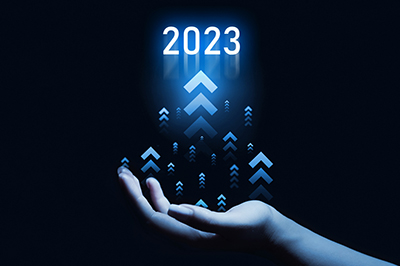The COVID-19 pandemic certainly caused many if not most enterprises to rethink their Digital Transformation initiatives, and many projects have been on hold for the last three years. Enabling remote working via online meetings, file sharing, and security measures quickly emerged as the top priority for Japanese companies, but as Japan’s economy has increasingly reopened over the last several months, priorities are now again shifting. In 2023, domestic companies are expected to resume their previous Digital Transformation plans, but the experiences of the pandemic have not been forgotten, as many enterprises are now also including technologies which can “future-proof” IT infrastructure, and hence, add a layer of resilience to operations in preparation for the next severe socioeconomic disruption. The following list comprises ten technologies which we believe will be increasingly important to include in IT strategic roadmaps going forward.
Top Japan IT Technology List for 2023
The following technologies are expected to have a large impact on the Japanese market in 2023 both in terms of commercial deployments and R&D initiatives:
1. Satellite Communications – The satellite communications industry is experiencing a renaissance due to the massive increase in the number of Low Earth Orbit satellites in service due to the efforts of companies such as Starlink, OneWeb, and others. Starlink recently started offering service in Japan and has partnered with KDDI, and hence, enterprises now have another option for remote, mobile, and global coverage.
2. 5G – In 2022, 5G network coverage expanded considerably in Japan and is expected to reach 95% of the population by the end of FY2023, meaning that most of the country will have access to better wireless connectivity. Indoor coverage will remain a challenge, and “Local 5G” will continue its strong growth in the Japanese market as prices continue to fall for Network-as-a-Service offerings.
3. Edge Computing – Reducing network latency, and thus unlocking new use cases, has long been the purported goal of edge computing technology, and in 2023, falling hardware costs and stronger communications networks will continue to make this a reality. For example, NTT Communications recently demonstrated how 5G edge-enabled kiosks can instantly verify an event ticket holder via facial recognition and eliminate waiting lines at events.
